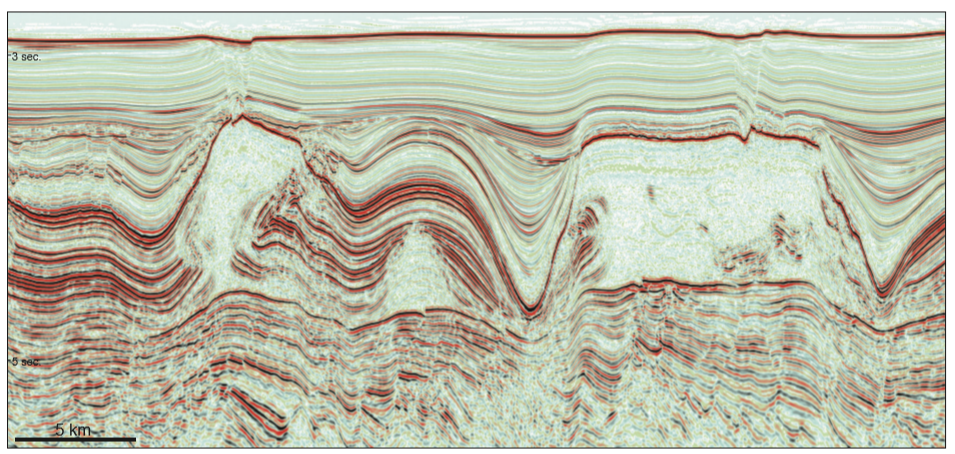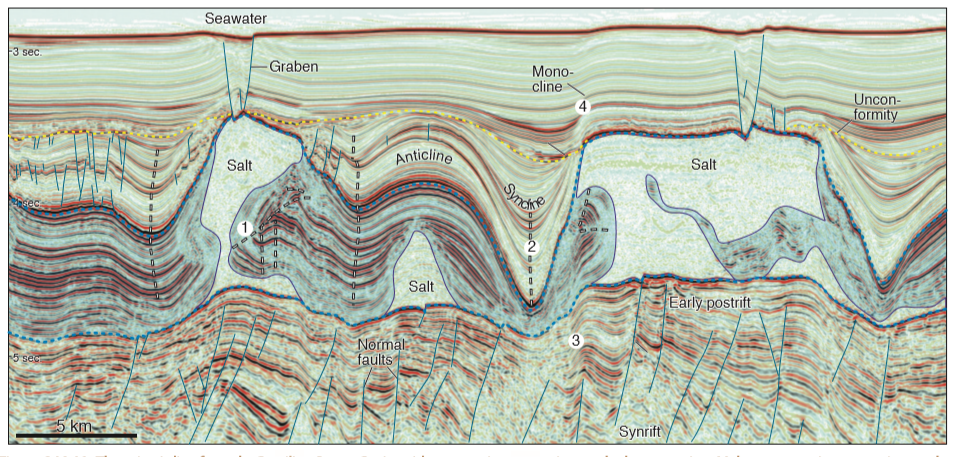Can you do a rough interpretation of Figure 1.6 and identify the stratigraphic level of the salt, pencil in salt structures and interpret the folds?
What will be an ideal response?
Answer: This line is full of interesting details that can be studied. The large-scale features are a Cretaceous rift (from the time when Gondwana rifted apart) and early postrift sediments underlying an evaporitic section. The evaporites are marked in blue, while purer salt of the lower part of this section is uncolored. The salt has mobilized into diapirs, although their vertical extent seems to be confined by the top of the evaporite layer. Salt movements has caused most of the folding. Some of the axial traces have been drawn in on Figure Q19.10. Most of them are upright folds and the folds are open. Fold listric fault. An alternative model is the flexural shear model often applied to fault-bend folds (see Chapter 16). We have not discussed this method in any detail in this book, but the mathematics are available in Suppe (1983) and the method is integrated into most commercial balancing software. In map view we sometimes have to deal with domes and basins, which can still be restored by means of shear. Vertical shear is equal to projecting particle points onto a horizontal surface, implying a change in area of the folded surface.


Figure Q19.10. The seismic line from the Brazilian Santos Basin, with my own interpretation on the lower section. Make your own interpretation on the upper one. Seismic data courtesy of CGGVeritas.
You might also like to view...
Surface indicators of turbulence in stream flows include eddies and ______.
a - whirlpools b - fluvial processes c - dissolved load d - braided streams e - meandering
The federally funded Brownfield Act has been a success by providing cleanup of real or perceived sites of environmental contamination that are not serious enough to reach Superfund status. This has been especially important in the creation of
A) waterways for the transportation of coal and oil. B) new national parks in several states. C) economic development in disadvantaged communities. D) new wildlife refuges for outdoor recreation and conservation purposes.
Most solifluction takes place ________.
A. in all areas that do not have permafrost B. in most areas that have permafrost C. in some areas that may not have permafrost D. Solifluction is not associated in any way with permafrost.
In which biome are most succulents most likely to grow?
A) boreal forest B) tropical forest C) desert D) chaparral E) grasslands